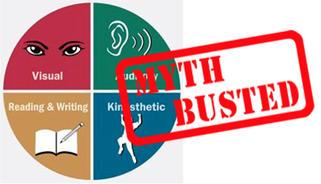Back in 2012, Dekker et al. found that well over 90% of the 200+ teachers from the UK and the Netherlands they surveyed agreed with the statement: “Individuals learn better when they receive information in their preferred learning style.” About a decade later, learning styles-based education is still common practice in many schools, and often a recommended form of differentiation. Yet, the existence of “learning styles” has still not been clearly supported by scientific research.
Adding to the debate, a team of researchers recently conducted an experiment testing the effectiveness of learning style-based instruction. More precisely, the Rogowski et alia (2020) focused on “visual” and “auditory” learning styles and asked a simple question: “Is there a correlation between students’ visual versus auditory learning style and their performance on a reading versus listening comprehension test?” Logically, the researchers explain, visual learners should perform better on a reading comprehension test, while auditory learners should perform better on a listening comprehension test. The experiment was conducted on 112 American 5th graders, who were first assessed using Rundle and Dunn’s Learning Style Inventory (LSCY), a well-established instrument that can be self-administered online in about 20 minutes and covers a wide range of learning style preferences (measured out of 5). Next, the students took two different versions of the same standardized comprehension test, the Gates-MacGinitie Reading Test, which required them to read and listen to 13 short passages followed by 3 to 6 questions. Results showed :
Interestingly, this means that, had a teacher used these different methods (reading or listening) to adapt to their students’ learning style, this differentiation could potentially have been detrimental to auditory learners. Although they go against a widespread belief in the world of education, these findings are maybe not all that surprising. Based on what we know from scientific studies on working memory, placing the cognitive lift on students and providing them with a variety of ways to process information may indeed be a better way to help them learn than catering to their hypothesized natural inclination. That being said, this study has its own limitations. Notably, one could argue that reading comprehension is not an appropriate way to test a visual learning preference. Images, diagrams, and the like, would have been better options. Yet again, listening comprehension seems like a fair way to test an auditory learning preference, and this is where the experiment provided the strongest evidence against the existence of "learning styles." Reference: Rogowski, Calhoun and Tallal, “Providing Instruction Based on Students’ Learning Style Preferences Does Not Improve Learning”, Frontiers in Psychology, February 2020.
0 Comments
Your comment will be posted after it is approved.
Leave a Reply. |
|
Proudly powered by Weebly

